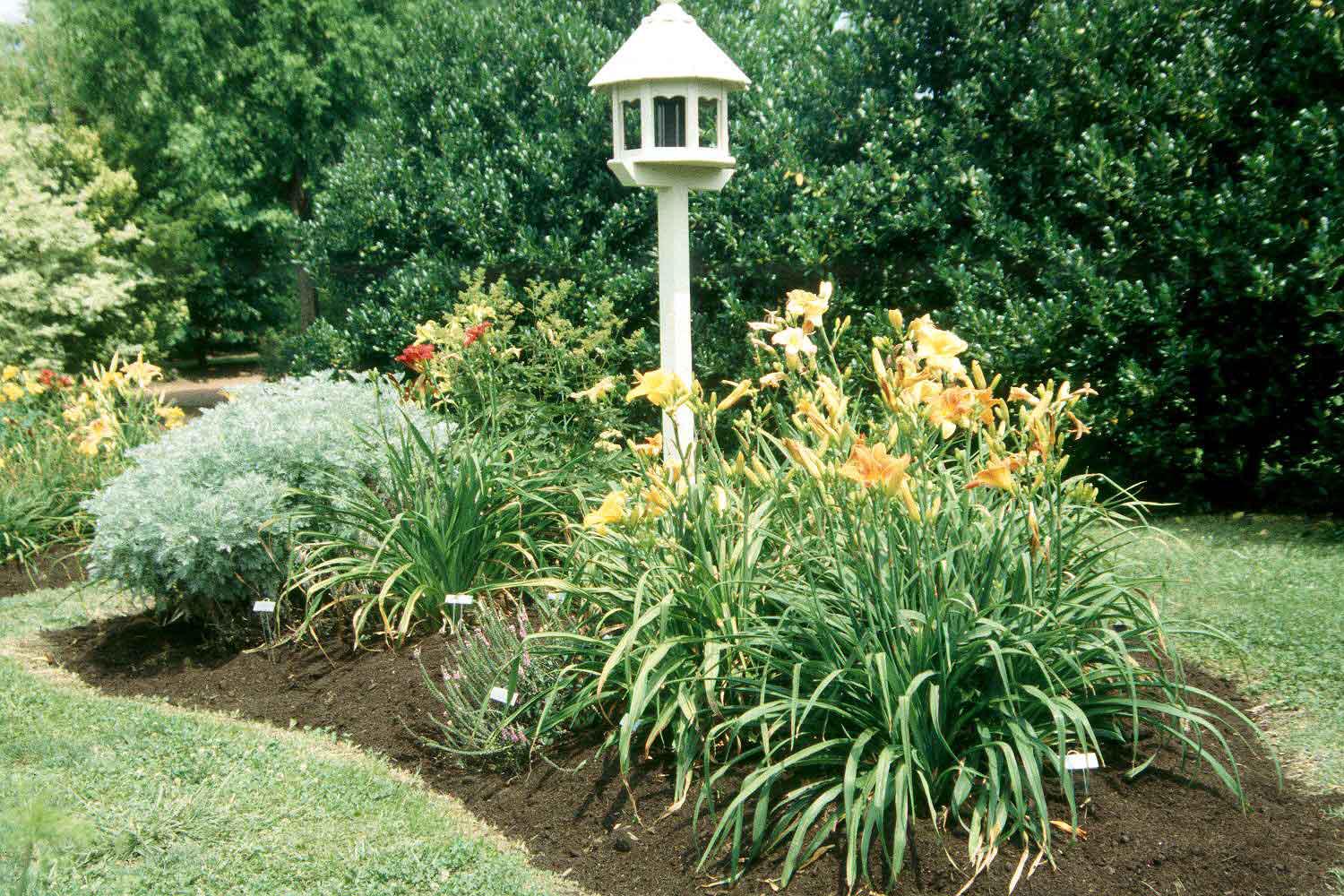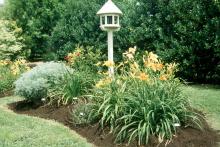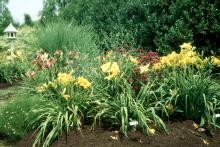Information Possibly Outdated
The information presented on this page was originally released on August 27, 2001. It may not be outdated, but please search our site for more current information. If you plan to quote or reference this information in a publication, please check with the Extension specialist or author before proceeding.
Take advantage of multiplying daylilies
By Norman Winter
MSU Horticulturist
Central Mississippi Research & Extension Center
If someone advertised free daylilies, would you go? Free daylilies may be waiting for you in the backyard already. Fall is just around the corner, and now is a good time to take a close look at your daylilies because they may have rewarded you with some free plants or "prolifs."
You may not be familiar with the word proliferate as it applies horticulturally. In this sense, proliferation is equal to money in the bank or free plants. Daylily enthusiasts are very familiar with the term prolif. However, just the other day I visited a gardener who had an exceptional landscape and very healthy daylilies but really did not know what was going on at the top of those old flower stalks.
Not only were these daylilies very healthy at the bottom, but they also were loaded with proliferations or small plants being formed at the top of each scape or old flower stalk. This is one of the easiest ways to add to your daylily collection or have more plants for a new bed or the neighbor down the street.
Look at the top of the old flower stalks to see if you have young plants forming. You may even have some that have roots extending. Once the proliferation has formed roots, root initials or nodes, cut the scape or stalk 2 to 3 inches below the proliferation. This can be stuck in a cup of water for further root development.
I really prefer to harvest the proliferation this way, dust with rooting hormone and place in a small pot of moist sand or potting soil to encourage faster rooting. A lot of daylily experts suggest trimming half the foliage back after harvesting the prolif from the mother plant. This certainly does have merit if there are not enough roots to support all of those leaves.
Label your proliferation because it is easy to forget what the mother plant looked like. If varieties are unimportant to you, label by color or something that will help you better place it in the garden when the time comes.
Make sure the potting medium stays moist, or if rooting in water, make sure the water level remains even with the bottom of the proliferation. You will want to grow your proliferation in a pot for at least a month, then plant it in the garden.
Perhaps you don't have proliferations, but your clumps have grown considerably over the years. The best time for dividing and transplanting daylilies is late summer and early fall. A plant moved in the late summer usually has a better bloom the following season than a plant moved in spring.
To divide the plants, loosen them with a spade fork or sharp shooter about 6 to 8 inches from the clump on all sides of the plant. Lift the clump, which will consist of several plants. Separate them from one another and replant. Remove half the foliage for fall and late spring transplanting.
Daylilies are among our best perennials, and it is fun to get additional plants for free by dividing or harvesting the little plants called proliferations.




